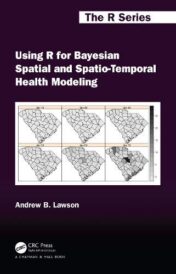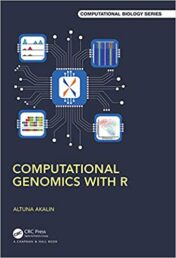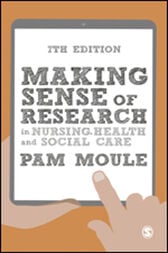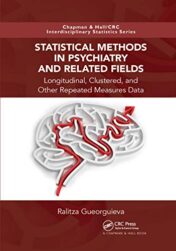Statistics Books
Regression and Other Stories (Analytical Methods for Social Research) (Original PDF)
Statistics Books
Statistics Books
Fundamentals of Epidemiology and Biostatistics (Original PDF)
Statistics Books
Statistics Books
Statistics Books
Artificial Intelligence in Sport Performance Analysis (Original PDF)
Statistics Books
Introduction
Are you looking to become a data analysis expert? If so, then you need to read the best statistics books available. Discover the Best Statistics Books to Help You Master Data Analysis is an essential guide for anyone wanting to learn more about data analysis and how to use it effectively. This guide provides an overview of the top statistics books on the market, including their key features, benefits, and reviews from experts. With this guide, you can easily find the perfect book to help you become a data analysis master.
Introduction to Statistics and Data Analysis: A Comprehensive Guide
Introduction to Statistics and Data Analysis: A Comprehensive Guide is an essential resource for anyone looking to gain a comprehensive understanding of the fundamentals of statistics and data analysis. Written by renowned statistician and data analyst Dr. John C. Pezzullo, this book provides readers with a thorough introduction to the field of statistics and data analysis.
The book begins with an overview of the basic concepts of statistics and data analysis, including descriptive statistics, probability distributions, hypothesis testing, and regression analysis. It then moves on to more advanced topics such as multivariate analysis, time series analysis, and nonparametric methods. Throughout the book, Dr. Pezzullo provides detailed explanations of each topic, along with numerous examples and exercises to help readers understand the material.
In addition to providing a comprehensive overview of the field, Introduction to Statistics and Data Analysis: A Comprehensive Guide also includes a variety of tools and resources to help readers apply their knowledge in real-world settings. These include software packages for data analysis, sample datasets, and case studies that illustrate how statistical techniques can be used to solve practical problems.
Overall, Introduction to Statistics and Data Analysis: A Comprehensive Guide is an invaluable resource for anyone interested in learning about the fundamentals of statistics and data analysis. With its clear explanations and comprehensive coverage of the subject, it is sure to be a valuable asset for students, researchers, and professionals alike.
Exploring Data with Graphs, Statistics, and Probability
Exploring data with graphs, statistics, and probability is a powerful tool for understanding the world around us. Graphs, statistics, and probability are used to analyze data and draw conclusions about trends, relationships, and patterns in the data. Graphs provide a visual representation of data that can be used to identify patterns and trends. Statistics are used to measure and quantify data, while probability is used to make predictions about future events.
Graphs are a great way to explore data because they allow us to quickly identify patterns and trends. Graphs can be used to compare different sets of data, or to show how one set of data changes over time. Common types of graphs include line graphs, bar graphs, scatter plots, and histograms. Line graphs are used to show how one variable changes over time, while bar graphs are used to compare different categories of data. Scatter plots are used to show the relationship between two variables, while histograms are used to show the distribution of a single variable.
Statistics are used to measure and quantify data. Common statistical measures include mean, median, mode, standard deviation, and correlation. Mean is the average value of a set of data, while median is the middle value of a set of data. Mode is the most common value in a set of data, while standard deviation is a measure of how spread out the data is. Correlation is a measure of how two variables are related to each other.
Probability is used to make predictions about future events. Probability is based on the idea that certain outcomes are more likely than others. For example, if you flip a coin, there is a 50% chance that it will land heads up. Probability can also be used to calculate the likelihood of certain events occurring, such as the probability of winning a lottery.
Exploring data with graphs, statistics, and probability is an important tool for understanding the world around us. By using these tools, we can gain insight into trends, relationships, and patterns in data. This knowledge can then be used to make informed decisions and predictions about the future.
Applied Statistics and Probability for Engineers
Applied Statistics and Probability for Engineers is a course designed to provide students with an understanding of the principles of applied statistics and probability. This course covers topics such as descriptive statistics, probability distributions, sampling techniques, hypothesis testing, regression analysis, and design of experiments.
The course begins by introducing students to the fundamentals of descriptive statistics, including measures of central tendency, variability, and correlation. Students will learn how to use graphical methods to summarize data and interpret results. They will also be introduced to probability distributions, including the normal, binomial, Poisson, and exponential distributions.
Next, students will learn about sampling techniques, including simple random sampling, stratified sampling, cluster sampling, and systematic sampling. They will also learn about the different types of sampling errors and how to minimize them.
The course then moves on to hypothesis testing, which is used to determine whether a given set of data supports or rejects a particular hypothesis. Students will learn how to calculate the probability of making a Type I or Type II error, and how to interpret the results of a hypothesis test.
Regression analysis is then discussed, which is used to identify relationships between two or more variables. Students will learn how to fit linear and nonlinear models to data, and how to interpret the results.
Finally, the course covers the design of experiments, which is used to determine the effects of various factors on a given outcome. Students will learn how to design experiments using blocking, randomization, and replication, and how to analyze the results.
Overall, Applied Statistics and Probability for Engineers provides students with a comprehensive overview of the principles of applied statistics and probability. By the end of the course, students should have a good understanding of the concepts and techniques covered, and be able to apply them to real-world problems.
Statistical Thinking for the 21st Century
Data Science for Business: What You Need to Know About Data Mining and Data-Analytic Thinking
Data Science for Business is a rapidly growing field that combines the power of data mining and data-analytic thinking to help businesses make better decisions. Data Science for Business is an interdisciplinary field that uses scientific methods, processes, algorithms, and systems to extract knowledge and insights from structured and unstructured data. It is used to identify patterns and trends in large datasets, which can then be used to make informed decisions.
Data Mining is the process of extracting useful information from large datasets. It involves the use of sophisticated algorithms and techniques to uncover hidden patterns and relationships in data. Data Mining can be used to identify customer preferences, predict future trends, and optimize business operations.
Data-Analytic Thinking is the ability to analyze data and draw meaningful conclusions from it. This involves understanding the data, identifying patterns, and using the data to make decisions. Data-Analytic Thinking requires an understanding of statistics, mathematics, and computer science.
Data Science for Business is becoming increasingly important as businesses strive to stay competitive in today’s ever-changing market. By leveraging the power of data mining and data-analytic thinking, businesses can gain valuable insights into their customers, products, and operations. This can help them make more informed decisions and improve their bottom line.
Data Science for Business is a complex field that requires a deep understanding of data mining and data-analytic thinking. It is important for businesses to have a team of experts who are knowledgeable in this area in order to maximize the potential of their data. Additionally, businesses should invest in the right tools and technologies to ensure they are able to effectively analyze and interpret their data.
Conclusion
In conclusion, data analysis is an important skill to have in today’s world. With the right statistics books, you can learn how to analyze data and make informed decisions. The books on this list are some of the best resources available to help you master data analysis. Whether you’re a beginner or an experienced analyst, these books will provide you with the knowledge and tools you need to become a successful data analyst.






























